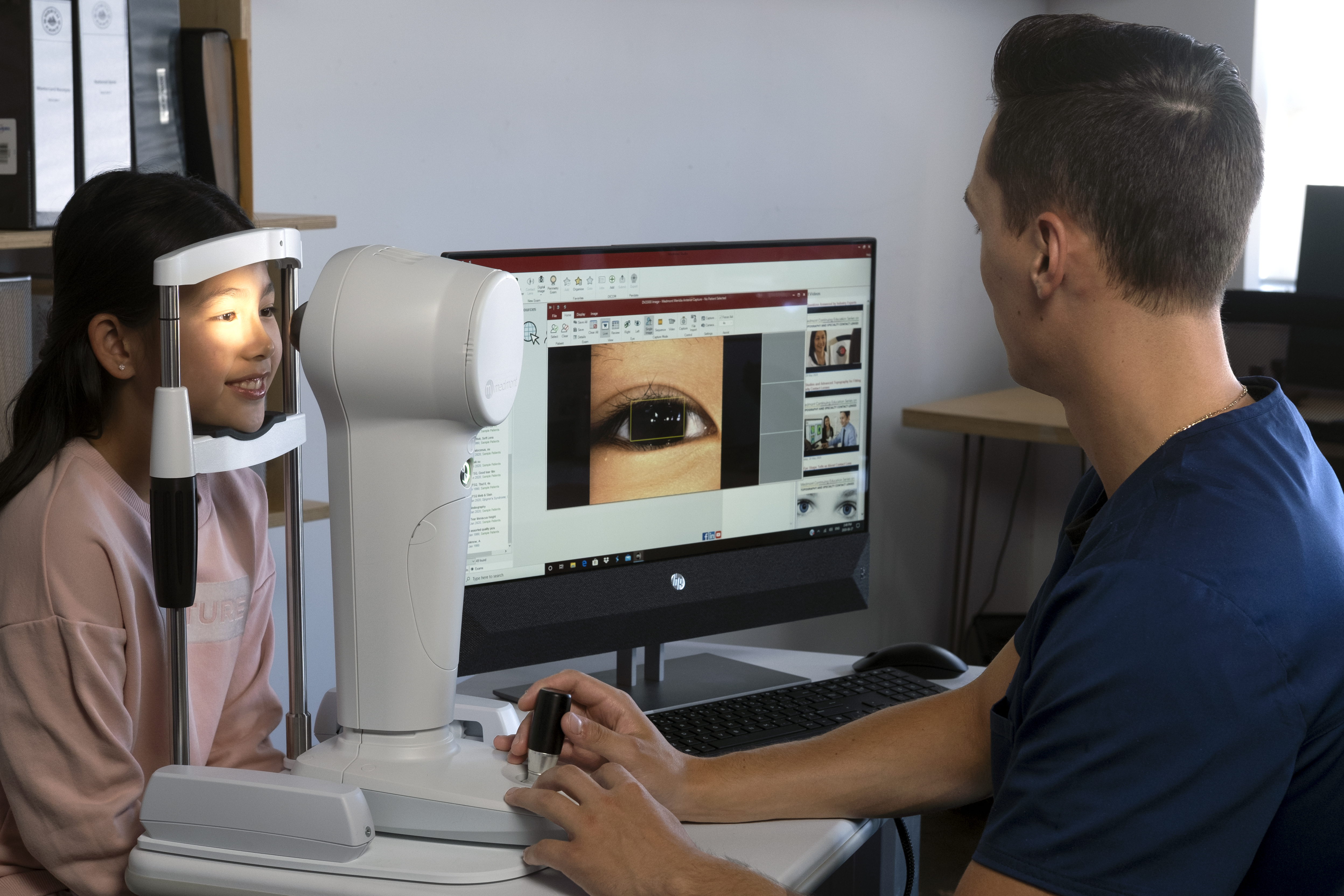Bridging the Gap: Managing Dry Eye Disease and Myopia with the medmont meridia™ Professional

What is Dry Eye?
Dry Eye is a multifactorial disease of the ocular surface characterised by a loss of homeostasis of the tear film, and accompanied by ocular symptoms., in which tear film stability and hyperosmolarity, ocular surface inflammation and damage, and neurosensory abnormalities play etiological roles. The DEWS II report also provided an evidence-based framework for diagnosing and managing Dry Eye Disease. This landmark guidance empowered clinicians to confidently identify and treat DED, leading to a surge in dedicated dry eye clinics and more structured patient care.
The Overlap Between Dry Eye and Myopia
Screen Time: A Shared Risk Factor
In today’s digital-first world, screen time is a common denominator. Prolonged use of digital devices reduces blink rate, destabilises the tear film, and increases ocular surface stress. These effects not only contribute to dry eye symptoms but also accelerate myopia progression.
An article Dry Eye Disease and Orthokeratology in Children published in Contact Lens Spectrum (April 2, 2025) By: Roxanne Achong-Coan OD, discussed Both DED and ortho-k on how it impacts not only children’s vision but also their overall quality of life. A 2014 study published in Cornea Is There a Relationship Between Pathologic Myopia and Dry Eye Syndrome? found that patients with pathologic myopia had significantly lower tear break-up times (TBUT) and higher Ocular Surface Disease Index (OSDI) scores than healthy individuals—clear signs of compromised ocular surface health.
Contact Lenses: A Double-Edged Sword
Contact lenses—especially orthokeratology (Ortho-K) and multifocal soft lenses—are widely and successfully used in myopia management. However, like all contact lenses they can disrupt tear film dynamics and exacerbate dry eye symptoms. This makes ocular surface evaluation a critical step in any myopia management plan.
A Two-Way Relationship
The relationship between dry eye and myopia management is bidirectional:
An unstable tear film can distort corneal topography, complicating lens fitting and treatment monitoring.
Dry eye discomfort can reduce patient compliance with myopia control strategies, undermining outcomes.
The medmont meridia™ Professional: A Unified Solution
The medmont meridia™ Professional is more than a corneal topographer—it’s a comprehensive ocular surface analyser designed to support clinicians in managing both dry eye and myopia with precision and efficiency.
For Myopia Management
- Wide-field Placido-disc topography for detailed corneal curvature mapping.
- Ideal for Ortho-K and multifocal lens fitting, with tools for accurate centration and design.
- Enables longitudinal tracking of corneal changes to assess treatment efficacy.
For Dry Eye Diagnosis and Monitoring
- Non-Invasive Tear Film Analysis:
- Tear Meniscus Height (TMH)
- Non-Invasive Tear Break-Up Time (NIBUT) – a key homeostasis marker per DEWS II management plan.
- Tear Film Surface Quality (TFSQ)
- High-Resolution Meibography:
- Visualizes meibomian gland structure and dropout.
- Supports diagnosis of Meibomian Gland Dysfunction (MGD).
- Anterior Segment Imaging:
- Utilises white light, infrared, and cobalt blue light for fluorescein imaging.
- Captures lid margin disease, conjunctival redness, and inflammation.
- Enhances patient education and treatment tracking.
Integrated Reporting and Workflow
- Combines topography and dry eye diagnostics in a single session.
- Generates customizable reports using standardized grading scales (Efron, BHVI, Meiboscale).
- Streamlines clinical workflow and improves patient communication.
Why Integration Matters
In a busy clinical setting, efficiency and accuracy are paramount. The medmont meridia™ Professional enables practitioners to:
- Identify and manage ocular surface issues before initiating myopia control.
- Monitor both conditions over time with a single, versatile device.
- Deliver a holistic, patient-centred approach to eye care.
Final Thoughts
As the prevalence of both myopia and dry eye disease continues to rise, the need for integrated, intelligent diagnostic tools becomes increasingly urgent. The medmont meridia™ Professional stands out as a powerful, all-in-one platform that empowers clinicians to deliver exceptional care—whether you’re fitting an Ortho-K lens, fitting soft lenses, diagnosing and managing DED or monitoring other anterior eye conditions.
By bridging the gap between these two growing concerns, the meridia™ helps ensure that no aspect of ocular health is overlooked.
19
May 2025







 Academy
Academy
Leave a Reply